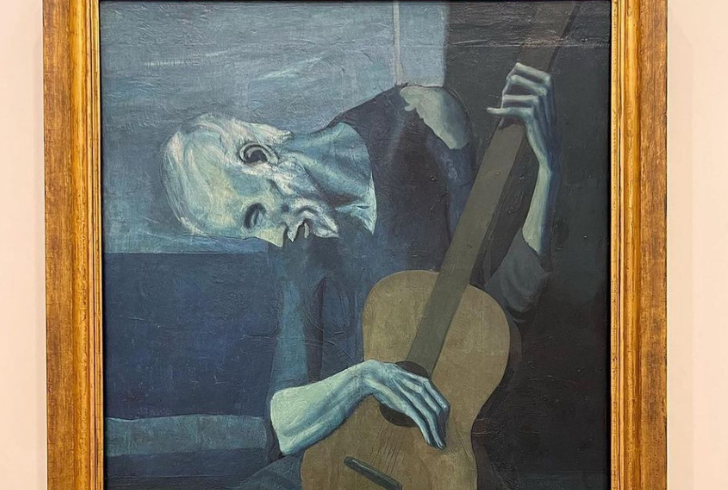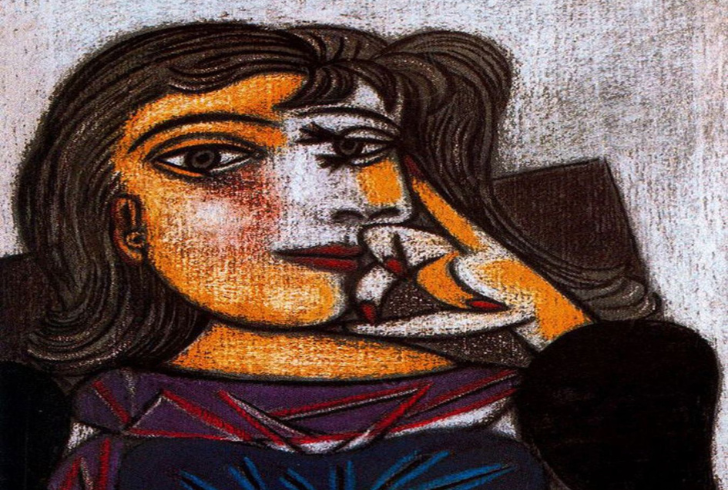Pablo Picasso’s influence on modern art is undeniable, and his works continue to captivate audiences around the world. When exploring what was Picasso's most famous painting, it's crucial to consider the diversity and impact of his artistic contributions. From his early Blue Period to his later masterpieces, Picasso's paintings reflect a profound evolution in style and subject matter.
This article delves into ten of Picasso’s most renowned paintings, providing insight into their significance and the stories behind them.
Top 10 Iconic Paintings by Pablo Picasso
1. Ma Jolie (1912)
"Ma Jolie," which translates to "My Pretty One," is a hallmark of Picasso’s Cubist phase. This painting references a popular song from a Parisian music hall, reflecting Picasso's personal connection to his muse, Marcelle Humbert. The artwork showcases Picasso’s innovative approach to Cubism with its fragmented depiction of his lover's figure.
In "Ma Jolie," Picasso uses shifting planes and abstract forms to convey his subject. The composition includes elements such as a guitar and fragmented facial features, presenting a modernist twist on traditional portraiture.
2. The Old Guitarist (1903-1904)

Instagram | portraitpaintingsdaily |"The Old Guitarist" by Picasso is a haunting masterpiece of the Blue Period, depicting profound human suffering.
"The Old Guitarist" stands out as one of Picasso's most poignant works from his Blue Period. This painting was created during a time of profound personal loss, following the suicide of his close friend Carlos Casagemas. It reflects a deep empathy for the downtrodden and impoverished, capturing the essence of Picasso’s emotional and financial struggles.
In this painting, a gaunt, blind musician clutching a large, round guitar embodies both physical and metaphorical deprivation. The muted blue tones and the distorted form of the guitarist highlight the themes of poverty and blindness, drawing a parallel to the artist's own hardships.
3. La Vie (1903)
"La Vie" represents a significant piece from Picasso's Blue Period, showcasing his deep engagement with themes of life, death, and existential struggle. This painting portrays two pairs of figures—a nude couple and a mother with a child—interacting in a studio setting.
The painting’s duality, with one section depicting a tender embrace and another showcasing solitude, reflects Picasso's exploration of human suffering and intimacy. It also includes a hidden motif inspired by Vincent Van Gogh’s work, adding layers of meaning to this complex composition.
4. Les Demoiselles d’Avignon (1907)
"Les Demoiselles d’Avignon" is often hailed as one of Picasso's most groundbreaking works. This large canvas features five nude figures depicted in a fragmented, angular style that challenges traditional notions of beauty and form.
The painting’s unconventional portrayal of its subjects, including elements of African and Iberian art, marks a revolutionary shift in Picasso’s approach to the human form. Its raw, provocative nature makes it a cornerstone of modern art history.
5. Guernica (1937)
"Guernica" is perhaps Picasso's most powerful political statement. Created in response to the bombing of the Basque town of Guernica during the Spanish Civil War, this massive mural depicts the horrors of war with striking intensity.
In stark black, white, and grey, "Guernica" portrays scenes of chaos and suffering, including a wounded horse, a fallen soldier, and a grieving woman. This painting remains a poignant reminder of the tragedies of war and continues to resonate with audiences worldwide.
6. Figures at the Seaside (1931)
"Figures at the Seaside" showcases Picasso’s exploration of surrealism during his time on the French Riviera. This painting features two figures with mantis-like heads, illustrating Picasso’s fascination with unusual forms and his personal experiences.
The artwork, influenced by Picasso’s relationship with a young model and his marital difficulties, exemplifies his innovative use of surrealist imagery and symbolic representation.
7. The Soup (1902)
"The Soup" is a poignant piece from Picasso's Blue Period, reflecting his personal struggles with poverty. The painting depicts a woman assisting another in need, inspired by Picasso’s observations of social hardship and his experiences during this tumultuous time.
This work highlights the empathy and social consciousness that characterized Picasso’s early career, providing a glimpse into the artist's compassionate response to the challenges faced by others.
8. Large Nude in a Red Armchair (1929)
"Large Nude in a Red Armchair" demonstrates Picasso’s shift towards a more vibrant and complex color palette. Influenced by surrealism and his troubled relationship with his first wife, Olga, this painting features a nude figure in a dramatic, red armchair.
The painting reflects Picasso’s emotional state and artistic evolution, marked by the transition from earlier, more restrained styles to a more intense and saturated approach.
9. Portrait of Dora Maar (1937)

Instagram | pablopicasso_collection | Portrait of Dora Maar" captures Picasso's turbulent relationship with his muse through a haunting, fragmented image.
"Portrait of Dora Maar" captures Picasso's muse and lover, Dora Maar, in a distinctive style. Known for its rich details and emotional depth, this painting illustrates Maar’s elegance and strength through Picasso’s unique Cubist lens.
Dora Maar is depicted with intricate elements such as a floral motif on her jacket and vibrant red nails. The portrait reflects both her personality and Picasso's evolving artistic vision during this period.
10. The Weeping Woman (1937)
"The Weeping Woman" is a dramatic and emotional painting that serves as a companion piece to "Guernica." It portrays Dora Maar in a moment of anguish, capturing the personal and political turmoil of the era.
The painting’s vibrant colors and distorted forms emphasize the intensity of Maar’s distress, making it one of Picasso’s most compelling and memorable works.
When considering what was Picasso's most famous painting, it's clear that his oeuvre is rich with masterpieces that each tell a unique story. Each painting reflects a different facet of his genius, showcasing his ability to transform personal and political experiences into timeless art. Whether exploring the poignant blues of his early years or the revolutionary cubism of his later works, Picasso’s legacy endures through these iconic paintings.




